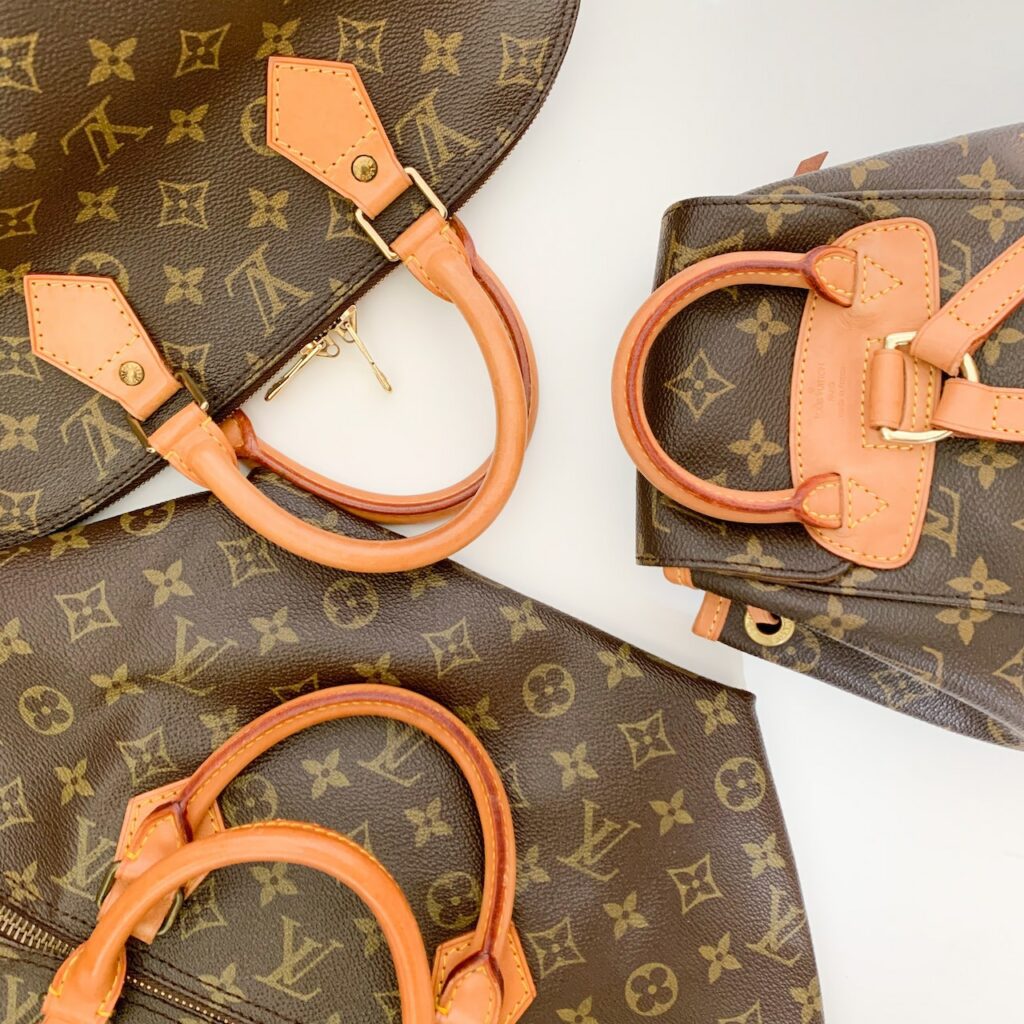We all know the name “Louis Vuitton”. But, you might not know these facts about how Louis Vuitton came to be!
Louis Vuitton was founded in 1854 by a man of the same name.
Louis Vuitton was born in 1821 in Anchay, a small village in the Jura Mountains of eastern France. He was the son of a farmer and had seven siblings. At the age of thirteen, he left home to seek his fortune in Paris. With only four francs in his pocket, he arrived at the city’s central train station and found work as a luggage porter. In 1837, Louis Vuitton started working for a trunk-maker called Monsieur Maréchal. Within two years, he had been promoted to head designer and manager of the workshop. It was during this time that he developed his skills as a craftsman and gained an intimate knowledge of every aspect of trunk-making. In 1854, Louis Vuitton opened his own workshop on Rue Neuve des Capucines in Paris. His trunks were soon being sought after by society’s elite, including Napoleon III and his wife Empress Eugénie. As word spread about the quality of Louis Vuitton’s products, demand increased rapidly and he began to expand his range to include other luxury items such as gloves, hats, umbrellas and jewellery cases. In 1865, Louis Vuitton debuted his now iconic Monogram canvas design at the International Exhibition in Paris. The interlocking LVs were intended to symbolise both wealth and prestige, and they quickly became synonymous with high fashion. Today, Louis Vuitton is one of the most valuable luxury brands in the world with over 500 stores across 70 countries selling its signature luggage, clothes, shoes, handbags and accessories
Louis Vuitton’s son, Georges, took over the company in 1896 and expanded the business into new areas such as luggage and handbags.
Georges Vuitton Georges Vuitton was the son of Louis Vuitton, the world-famous French fashion designer and founder of the eponymous luxury brand. Born in 1873, Georges was raised in a privileged environment and educated at some of the finest schools in Paris. He later joined his father’s company, where he rose to become one of its most important executives. In 1896, Georges oversaw the construction of Louis Vuitton’s flagship store on the Champs-Élysées, which is still one of the brand’s most iconic locations today. While working for his father’s business, Georges also developed his own passion for design and art. In 1901, he debuted his first original design: a monogrammed canvas trunk that would become one of Louis Vuitton’s most emblematic products. Inspired by Japanese prints and Art Nouveau motifs, Georges’ monogram became an immediate hit with customers and helped solidify Louis Vuitton’s reputation as a purveyor of high-quality luggage. In addition to his work at Louis Vuitton, Georges was also an avid sportsman and adventurer. He was an accomplished sailor and often competed in yacht races around Europe; in 1903, he even won the prestigious Kaiserpreis race from Germany to England. His love of travel led him to explore many different cultures; on a trip to Egypt in 1909, he even met famed archaeologist Howard Carter (who would later discover Tutankhamun’s tomb). Georges died suddenly in 1936 at the age of 63. Following his death, control of Louis Vuitton passed to his son Gaston-Louis; under Gaston’s leadership, the company expanded rapidly throughout Europe and America during the postwar years.
In 1901, Georges designed the famous “Steamer Bag” which was inspired by his travels on board luxury steamships.
The design was an instant success and has become one of Vuitton’s most iconic pieces. The original steamer bag was made of brown canvas with a leather trim and featured LV’s now-famous monogram print. The bag could be folded flat when not in use, making it perfect for storing in small spaces. It also had a sturdy frame that allowed it to stand upright on its own. Over the years, the steamer bag has been reinvented countless times but always remains true to its roots as a functional and stylish travel companion. Today, it is available in a variety of materials including leather, damier ebene canvas, and monogram vernis leather. Prices start at around $2,000 for the smallest size and can go up to $4,000 for the largest size. Whether you’re planning a weekend getaway or a longer vacation, packing your belongings in a Louis Vuitton steamer bag will ensure that you travel in style.

All great brands start somewhere, and sometimes learning about their history can make it even more fulfilling to appreciate them today.
